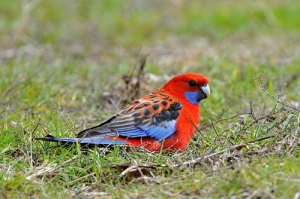The following blog post is part of this exercise.
Birdwatching: combining leisure and conservation.
BOCA bird camp
The Strathbogie Tableland is a special part of the world, hidden on a plateau in the Strathbogie Ranges, 200 km north-east of Melbourne. It’s here that Bird Observation and Conservation Australia (BOCA) spent five days camping and birdwatching recently.
Both BOCA members and non-members are welcome to join in on holidays like this, away from the hustle and bustle of the city. The aims are to socialise, to relax, and to watch birds and collect valuable information on them.
I joined this BOCA camp for one afternoon for a walk in a private property in a part of the Tableland called Boho South.
Birdwatching
Birdwatching isn’t difficult. All you need are a pair of binoculars, a bird identification book, and an interest in birds. Of course, it helps to have the company of a more experienced birder, which is why joining a bird camp is a great way to learn more.
Birdwatching isn’t boring, either. Many people envisage birdwatching as sitting silently in a hide, watching birds as they pass by. In reality, there are many ways to watch birds. On this bird camp, we simply went for a small walk and kept an eye out for birds. The aim was to enjoy the bush as much as it was to enjoy the birds.
Conservation
Birdwatching is more than a sociable and leisurely pastime. Data collected from birdwatching can be valuable for conservation. Many landowners who are actively engaged in revegetating parts of their property ask BOCA and other birdwatching groups to survey their land.
The result is that land owners find out which bird species are found on their property, and the ornithological community—that is, the community concerned with the study of birds—can add to its bird distribution records. Ultimately, we can determine which areas are the most important to protect, depending on species diversity and the presence of threatened species.
Why birds?
Birds are good indicators of how healthy an environment is. What’s more, generally, they’re easier to see than other fauna, and research suggests that rises and dips in bird populations can indicate environmental change.
Join in
Anyone is welcome on BOCA camps, regardless of membership and birding experience. It’s a relaxing weekend activity where you can combine leisure-time in the bush with a little bit of conservation, and learn something new. Contact BOCA for more information.



